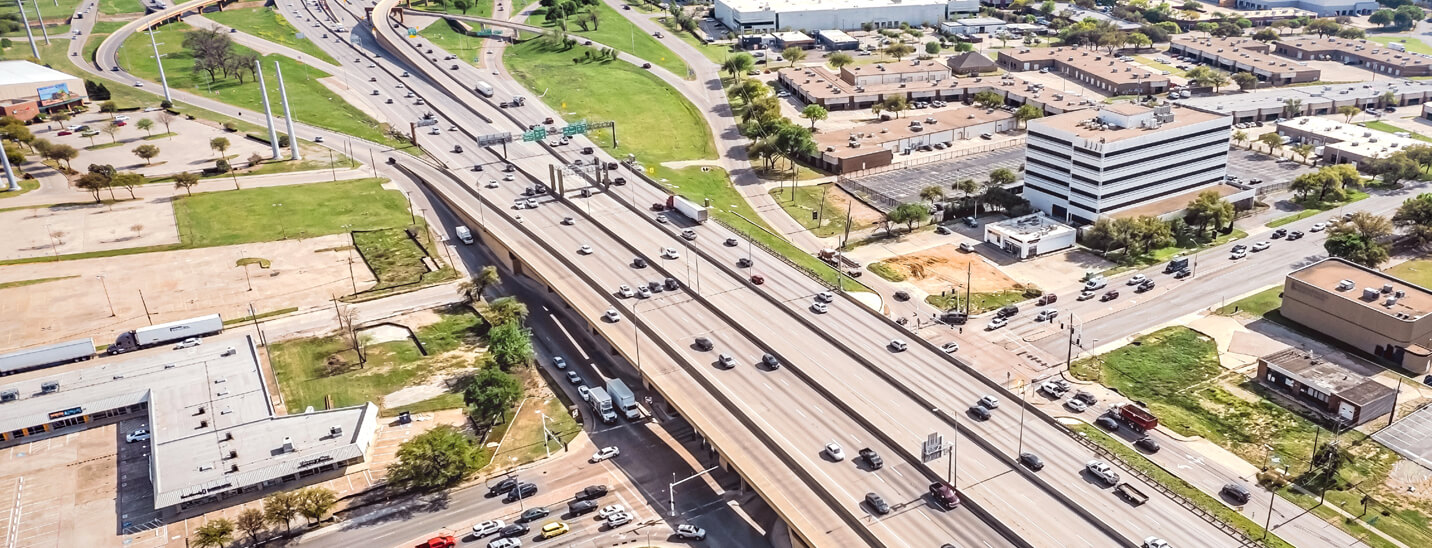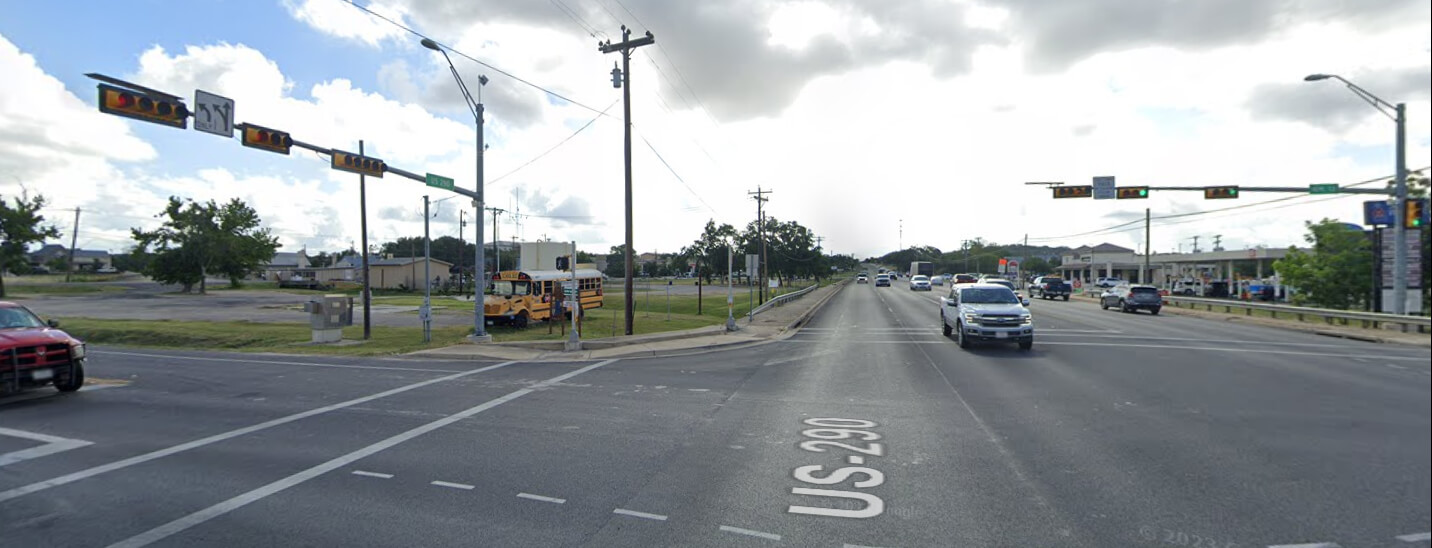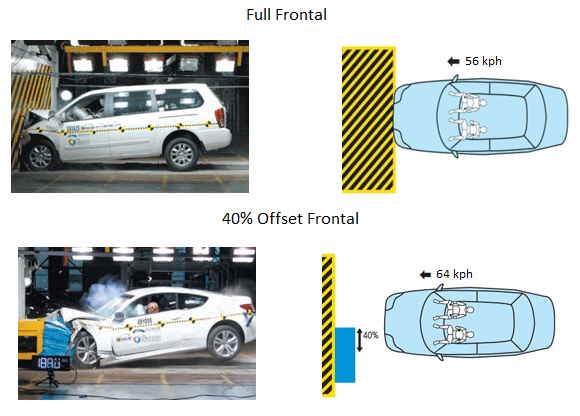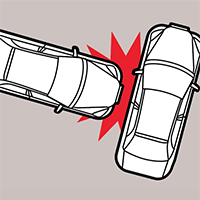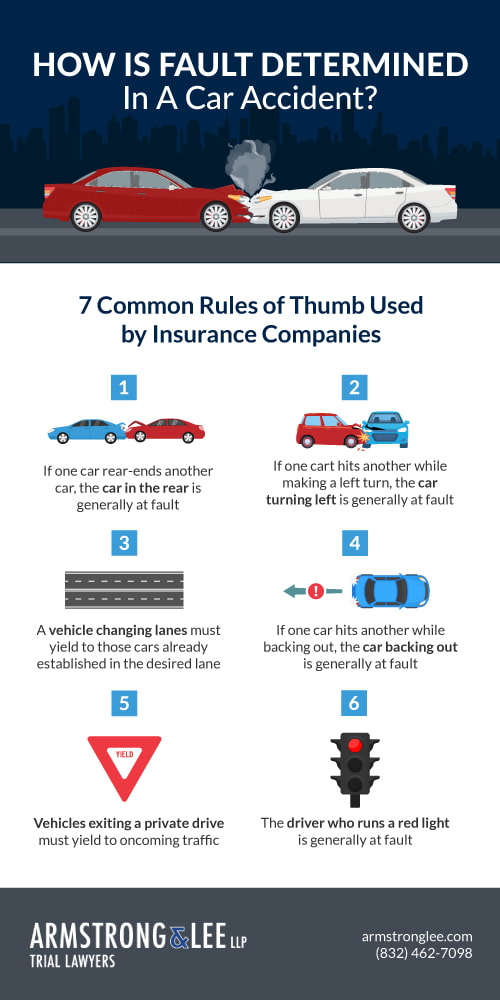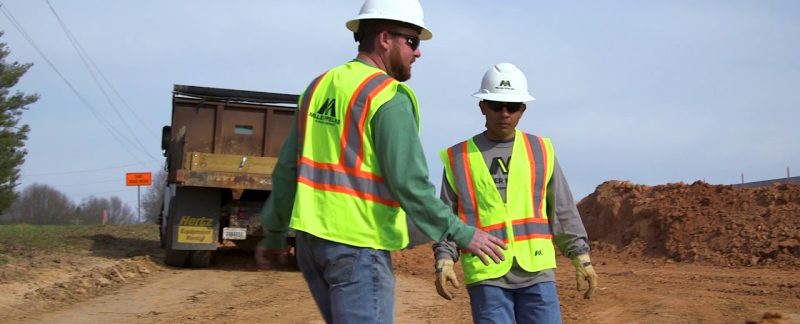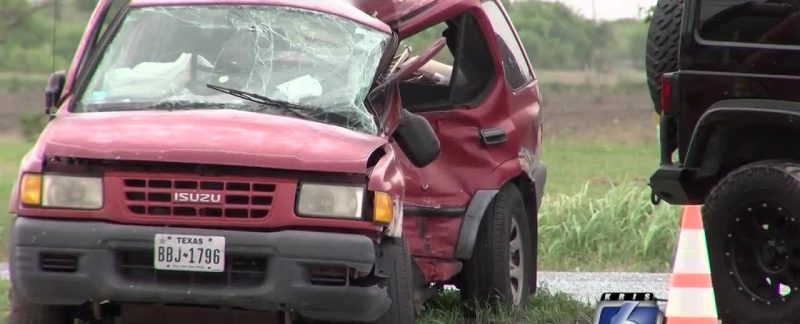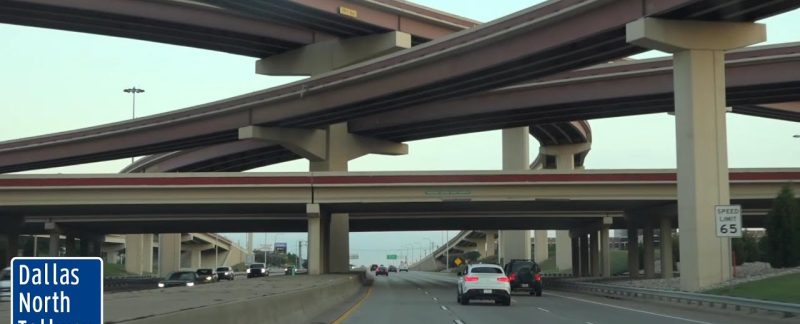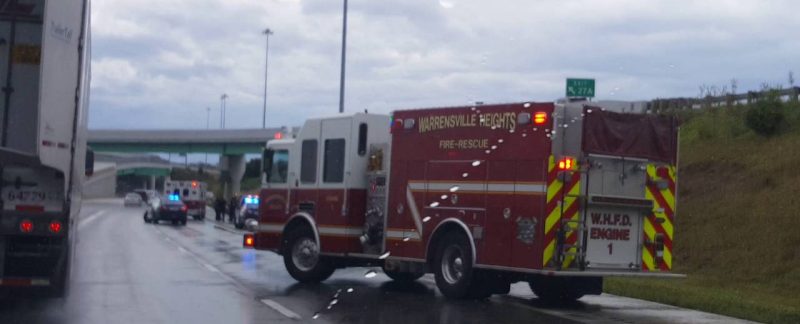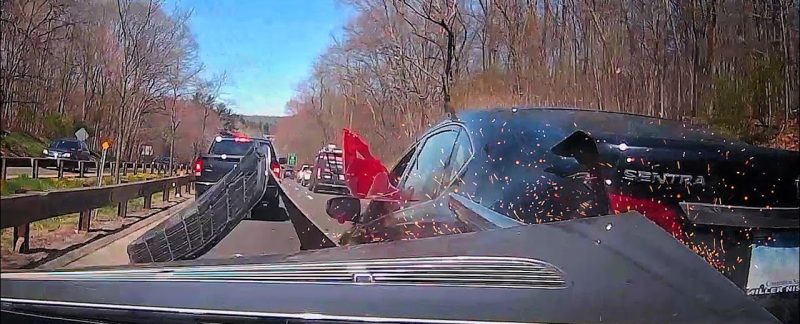Understanding the Causes of Truck Jackknifing
Truck jackknifing is a common and frightening occurrence on the roads. It happens when the trailer of a semi-truck swings out of control and forms a sharp angle with the cab. The result can be catastrophic, causing accidents and serious injuries. However, understanding the causes of truck jackknifing can help prevent these accidents from happening. In this blog post, we will be discussing the various factors that can lead to truck jackknifing. From driver error and road conditions to inclement weather and equipment failure, we will delve into the complexities of this dangerous phenomenon. So, if you’re a truck driver, a road user, or just someone who wants to know more about truck jackknifing, this blog post is for you!
Truck jackknifing: What is it and why is it dangerous?
Truck jackknifing is a term commonly heard in the realm of transportation and logistics. It refers to a dangerous scenario where a large truck or trailer skids on the road, causing the trailer to swing out to the side, forming an angle similar to that of a folding pocket knife. This phenomenon is not only visually alarming but also poses significant risks to both the truck driver and other vehicles on the road.
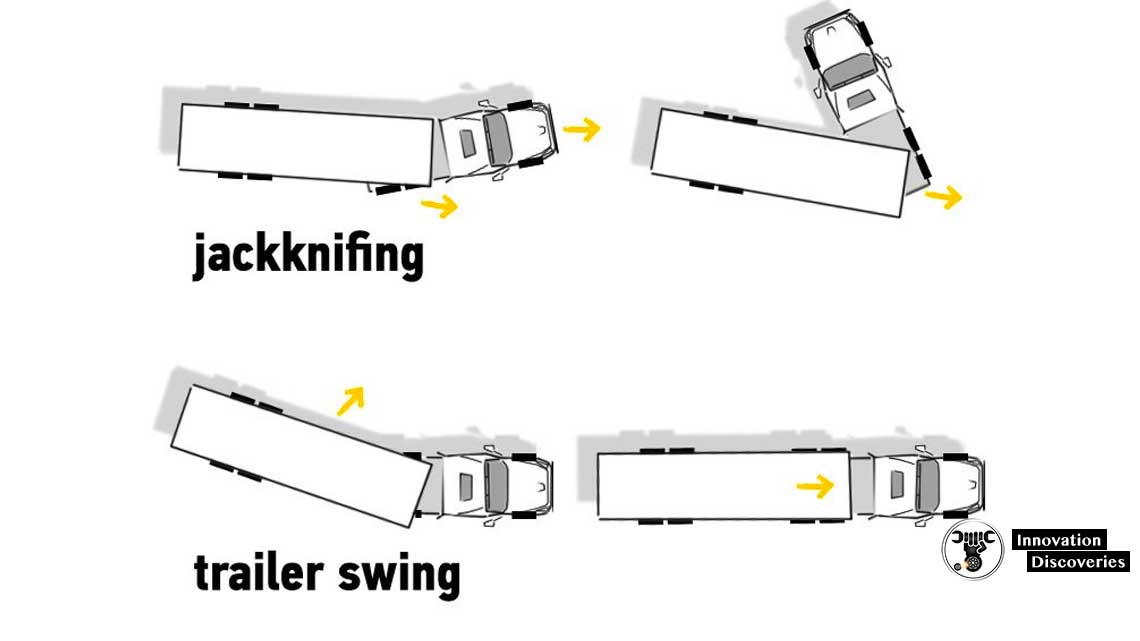
jackknife accident; image via innovationdiscoveries
Understanding the causes of truck jackknifing is crucial in order to prevent such accidents from occurring. One primary factor is adverse weather conditions. Slippery roads due to rain, snow, or ice reduce the traction between the tires and the road surface, leading to a loss of control. Additionally, sudden braking or accelerating on these treacherous surfaces can further exacerbate the likelihood of jackknifing.
Another important factor is improper braking technique. When a truck driver applies the brakes abruptly or unevenly, it can cause the trailer’s wheels to lock up while the truck continues to move forward. This uneven braking force creates a disparity in traction between the truck and trailer, ultimately causing the trailer to swing out uncontrollably.
Moreover, equipment failure can also contribute to truck jackknifing. Malfunctioning or poorly maintained braking systems, tires with insufficient tread, or faulty steering mechanisms can all increase the likelihood of a jackknife incident.
The dangers associated with truck jackknifing are multifaceted.
- Sudden loss of control can result in a collision with other vehicles on the road, leading to severe injuries or even fatalities.
- Jackknifed trucks can obstruct traffic flow, causing additional accidents and gridlock.
- Extent of property damage caused by a jackknife incident can be significant, leading to costly repairs and insurance claims.
Understanding the physics behind truck jackknifing: How does it happen?
Truck jackknifing is a terrifying and potentially dangerous phenomenon that every truck driver dreads. To truly understand this phenomenon, it’s crucial to delve into the physics behind it and unravel the mechanics that contribute to its occurrence.
At its core, truck jackknifing is a result of the loss of traction between the tires of the truck and the road surface. This loss of traction can be caused by a variety of factors, including adverse weather conditions, sudden and excessive braking, improper weight distribution, or even mechanical failures.
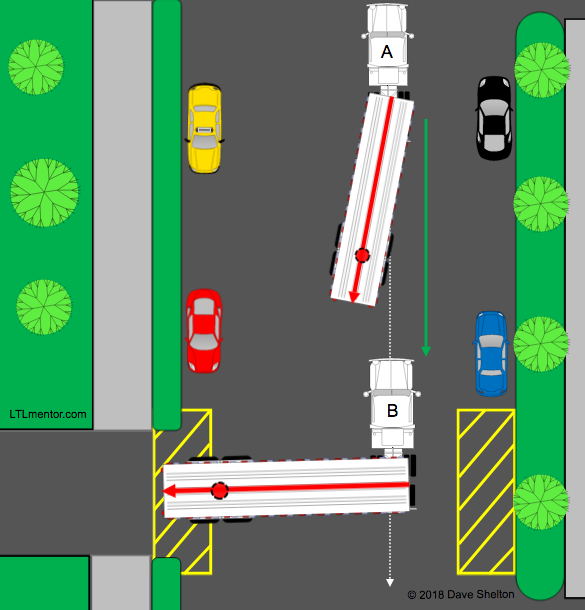
Truck Backing Physics; image via ltlmentor
When a truck driver applies the brakes abruptly, the weight of the trailer behind the cab exerts a significant force forward. Meanwhile, the tires on the trailer may have less traction due to factors like wet or icy road surfaces. As a result, the trailer can start to skid sideways, forming an angle with the truck cab, resembling the folding motion of a jackknife.
The physics behind this motion can be explained by the concept of rotational inertia. As the trailer skids, the rotational inertia pivots the trailer around its connection to the truck, causing it to swing out of alignment. This angular motion amplifies the force exerted on the trailer, making it increasingly difficult for the driver to regain control.
The length and weight distribution of the trailer plays a crucial role in the occurrence of jackknifing. Longer trailers are more susceptible to jackknifing due to their increased flexibility and higher chances of weight transfer during braking or sudden maneuvers. Similarly, improper weight distribution, such as having too much weight towards the rear of the trailer, can destabilize the truck, further increasing the risk of jackknifing.
Weather conditions and road surfaces: How they contribute to truck jackknifing
Weather conditions and road surfaces play a significant role in contributing to truck jackknifing incidents. It is crucial to understand how these factors can increase the risk of jackknifing and take appropriate precautions to ensure safety on the road.
Rain or Snow
During adverse weather conditions such as heavy rain, snow, or ice, the traction between the truck’s tires and the road surface is greatly reduced. This loss of traction can lead to instability and loss of control, making it more likely for a truck to jackknife. Slippery road surfaces, especially when combined with sudden braking or sharp turns, can cause the trailer to swing out to the side, potentially resulting in a dangerous jackknife situation.
Wind
Strong winds can also contribute to the occurrence of jackknifing. Crosswinds, in particular, can exert a lateral force on the truck, destabilizing its balance. If the wind force is strong enough, it can push the trailer out of alignment with the truck’s cab, causing a jackknife.
Mitigate the risks
To mitigate the risks associated with weather conditions and road surfaces, truck drivers should exercise caution and adapt their driving behavior accordingly. Slowing down, maintaining a safe following distance, and avoiding sudden maneuvers can help reduce the likelihood of jackknifing incidents. Regular vehicle maintenance, including checking tire tread and ensuring proper tire inflation, is essential for optimal traction on different road surfaces.
Monitoring weather forecasts and road condition reports can provide valuable insights and allow drivers to plan their routes accordingly. In some cases, it may be necessary to delay the trip or find alternative routes to avoid treacherous weather or road conditions that increase the risk of jackknifing.
Equipment failure and maintenance issues: Common causes of truck jackknifing
When it comes to truck jackknifing, equipment failure, and maintenance issues are among the common culprits. The size and weight of commercial trucks put enormous strain on their components, and if these components are not properly maintained or unexpectedly fail, it can lead to dangerous situations on the road.
Brake system malfunctions
One of the main causes of equipment failure is brake system malfunctions. Faulty brakes can result in uneven braking force applied to the trailer and tractor, causing the trailer to swing out uncontrollably. This can occur due to worn brake pads, leaking brake lines, or even improper adjustment of the braking system. Regular inspections and maintenance of the brakes are crucial to prevent such failures.
Tire issues
Tire issues can also contribute to truck jackknifing. Poor tire maintenance, such as underinflation or worn-out treads, can lead to decreased traction and stability. When a tire loses grip on the road, especially during braking or cornering, it can cause the trailer to skid and ultimately jackknife. Regular checks for tire pressure, tread depth, and overall condition are essential to ensure optimal performance and minimize the risk of accidents.
Steering system problems
Steering system problems can significantly impact a truck’s ability to maintain control. Malfunctioning steering components, such as worn-out tie rods or steering linkage, can make it difficult for the driver to maneuver the vehicle efficiently. This can lead to sudden swerving or loss of control, increasing the likelihood of jackknifing incidents. Routine inspections and prompt repairs of the steering system are crucial to prevent such issues.
Driver error and inattentiveness in truck jackknifing incidents
When it comes to truck jackknifing incidents, one of the key causes that cannot be overlooked is driver error and inattentiveness. No matter how advanced the technology or how well-maintained the truck, it ultimately comes down to the human factor behind the wheel.
Fatigue, distraction, and lack of proper training can all contribute to driver error and inattentiveness, leading to the dangerous situation of a truck jackknifing. Long hours on the road without sufficient rest can impair a driver’s judgment and reaction time, increasing the likelihood of making critical mistakes.
Distractions inside the cab, such as texting, eating, or even adjusting the radio, can divert the driver’s attention away from the road and the task at hand. Even a momentary lapse in focus can have disastrous consequences when operating a large commercial vehicle.
It is also important to consider the role of proper training and experience in preventing truck jackknifing incidents. Adequate training programs should cover defensive driving techniques, understanding the limitations of the vehicle, and how to handle emergency situations. Without this knowledge and experience, drivers may be ill-equipped to handle unexpected events on the road, increasing the risk of jackknifing.
Addressing the human factor in truck jackknifing incidents requires a multi-faceted approach. Employers must prioritize driver safety by implementing comprehensive training programs, enforcing rest periods, and promoting a culture of attentiveness. Drivers themselves must take responsibility for their actions and make conscious efforts to stay focused and alert while behind the wheel.
Speeding and improper braking techniques and jackknifing
Speeding and improper braking techniques are among the leading causes of truck jackknifing, a dangerous phenomenon that can result in serious accidents on the road. As trucks are larger and heavier vehicles, their handling characteristics differ significantly from smaller vehicles, requiring special attention and skill from drivers.
One of the main factors contributing to jackknifing is speeding. When a truck is traveling at excessive speeds, it becomes more difficult for the driver to maintain control, especially during emergency situations or when sudden maneuvers are required. The momentum of the truck can cause the trailer to swing out to one side, leading to a jackknife situation where the trailer forms an acute angle with the truck cab.
Improper braking techniques also play a significant role in jackknifing incidents. Trucks often have a separate braking system for the trailer, known as the trailer brakes. When the driver applies the brakes abruptly or unevenly, it can cause an imbalance in braking forces between the truck and the trailer. This can result in the trailer locking up and skidding, while the truck continues to move forward, causing the two units to fold in on each other.
To prevent jackknifing caused by speeding and improper braking techniques, it is crucial for truck drivers to adhere to safe driving practices. This includes maintaining a safe and appropriate speed for the given road conditions, allowing for longer stopping distances. Drivers should also be trained in proper braking techniques, such as using gradual and controlled braking, especially when operating in slippery conditions.
Additionally, the use of advanced technology can aid in reducing the risk of jackknifing. Anti-lock braking systems (ABS) and electronic stability control (ESC) systems can help prevent wheel lock-up and provide greater stability during braking, minimizing the chances of a jackknife situation.
Overloaded or unbalanced cargo: Impact on truck stability
One of the major causes of truck jackknifing is overloaded or unbalanced cargo. When a truck is carrying more weight than it can handle or if the weight is not distributed evenly, it can greatly impact the stability of the vehicle.
Imagine a truck carrying a heavy load in the back but with very little weight in the front. This unbalanced distribution of weight creates a dangerous situation where the truck becomes prone to jackknifing. As the truck brakes or maneuvers, the weight in the back pushes against the cab, causing it to swing out uncontrollably.
Similarly, an overloaded truck puts excessive strain on the brakes, tires, and suspension system, making it difficult to maintain control. The extra weight increases the stopping distance and makes it challenging for the driver to respond quickly in emergency situations.
In addition to compromising the stability and control of the truck, unbalanced or overloaded cargo can also lead to tire blowouts. The excessive weight can cause the tires to overheat, leading to a blowout and further loss of control.
To prevent these issues, it is crucial for truck operators and drivers to ensure that the cargo is properly loaded, secured, and distributed evenly. This means following weight restrictions, using proper loading techniques, and regularly inspecting the cargo for any signs of imbalance or shifting during transit.
Tips and Strategies to Prevent Truck Jackknifing for Drivers
Preventing truck jackknifing is crucial for the safety of both the truck driver and other road users. By implementing the right tips and strategies, drivers and fleet managers can significantly reduce the risk of jackknifing incidents.
Proper training and education. Drivers should undergo comprehensive training programs that emphasize the importance of maintaining control and awareness while operating a large commercial vehicle. This includes understanding the dynamics of jackknifing and how to prevent it.
Maintain a safe following distance. By keeping a sufficient distance from the vehicle ahead, drivers have ample time to react and adjust their speed or maneuvers if necessary. This helps to avoid sudden braking or swerving, which can lead to jackknifing.
Practicing smooth and controlled braking is vital. Sudden or excessive braking can cause the trailer to skid, leading to a loss of control and potential jackknifing. Fleet managers should ensure that trucks are equipped with advanced braking systems, such as anti-lock braking systems (ABS), which help prevent wheel lock-up and maintain stability during emergency braking situations.
Maintaining proper tire traction. Regular inspections of tire condition and pressure are crucial to ensure optimal performance. Worn-out or underinflated tires can increase the risk of skidding and jackknifing. Additionally, using traction control systems and investing in quality tires with good grip can greatly enhance vehicle stability.
Fleet managers should also prioritize regular maintenance and inspections of the truck’s mechanical components. Faulty or worn-out mechanical parts, such as steering systems, suspension, and trailer couplings, can contribute to jackknifing incidents. Implementing a proactive maintenance schedule and addressing any identified issues promptly can prevent such accidents.
Driver awareness of road and weather conditions is vital. Encouraging drivers to adjust their driving behavior based on factors like rain, snow, or slippery surfaces can greatly reduce the risk of jackknifing. Providing them with real-time weather updates and ensuring they have access to reliable information about road conditions can aid in making informed decisions while on the road.
Role of technology in preventing truck jackknifing: Advanced safety features
Advanced safety features play a crucial role in preventing truck jackknifing, a dangerous and potentially deadly situation on the road. These technological advancements have revolutionized the trucking industry by providing drivers with additional layers of protection and control.
Electronic Stability Control
One such feature is Electronic Stability Control (ESC), which uses sensors to detect and mitigate potential jackknifing situations. ESC works by automatically applying brakes to individual wheels, adjusting engine torque, and even reducing vehicle speed to help the driver regain control and prevent the trailer from swinging out of alignment.
Roll Stability Control
Another important safety feature is the Roll Stability Control (RSC) system, which utilizes sensors to monitor the truck’s roll angle and lateral acceleration. If the system detects an imminent rollover or loss of stability, it can automatically apply individual wheel brakes and reduce engine power to prevent the truck from jackknifing.
Anti-lock Braking Systems
Furthermore, Anti-lock Braking Systems (ABS) have been instrumental in reducing the occurrence of jackknifing incidents. ABS prevents wheel lock-up during braking, allowing the driver to maintain steering control even in emergency situations. By preventing wheel lock-up, ABS helps to maintain stability and prevent the trailer from swinging out of control.
Forward collision warning systems
Forward collision warning systems and adaptive cruise control are becoming increasingly common in trucks. These technologies use sensors and cameras to detect potential collisions and automatically adjust the vehicle’s speed to maintain a safe following distance. By helping drivers maintain a safe and steady speed, these features can significantly reduce the risk of sudden braking or abrupt maneuvers that could lead to jackknifing.
While technology plays a vital role in preventing truck jackknifing, it is crucial to note that these features are not a substitute for skilled and attentive driving. Drivers must still undergo proper training, remain vigilant on the road, and practice safe driving techniques to complement the benefits of these advanced safety technologies.
Advanced safety features such as ESC, RSC, ABS, and collision warning systems have played a significant role in preventing truck jackknifing. By providing drivers with enhanced control, stability, and early warning systems, these technologies contribute to safer roads and help protect the lives of both truck drivers and other road users.
Safer practices to minimize truck jackknifing incidents.
It is crucial to promote safer practices in order to minimize truck jackknifing incidents. By understanding the causes of this dangerous phenomenon, we can take proactive measures to prevent it from occurring.
We hope that our blog post on understanding the causes of truck jackknifing has shed some light on this mysterious and dangerous phenomenon. By exploring the various factors that contribute to jackknifing, we hope to increase awareness and promote safer driving practices for truck drivers and motorists alike. Remember, proper maintenance, cautious driving, and understanding the physics at play can go a long way in preventing jackknifing incidents. Stay safe on the roads, and drive with caution!
